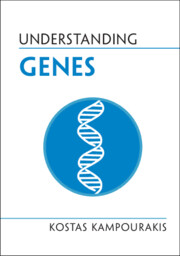Book contents
- Understanding Genes
- Series page
- Understanding Genes
- Copyright page
- Reviews
- Dedication
- Contents
- Foreword
- Preface: Genes, Science, and Science Fiction
- Acknowledgments
- 1 The Public Image of Genes
- 2 The Origin and Evolution of the Gene Concept
- 3 The Devolution of the Gene Concept
- 4 There Are No “Genes For” Characteristics or Disease
- 5 What Genes “Do”
- 6 The Dethronement of Genes
- Concluding Remarks: How to Think and Talk about Genes?
- Summary of Common Misunderstandings
- References
- Index
6 - The Dethronement of Genes
Published online by Cambridge University Press: 17 February 2022
- Understanding Genes
- Series page
- Understanding Genes
- Copyright page
- Reviews
- Dedication
- Contents
- Foreword
- Preface: Genes, Science, and Science Fiction
- Acknowledgments
- 1 The Public Image of Genes
- 2 The Origin and Evolution of the Gene Concept
- 3 The Devolution of the Gene Concept
- 4 There Are No “Genes For” Characteristics or Disease
- 5 What Genes “Do”
- 6 The Dethronement of Genes
- Concluding Remarks: How to Think and Talk about Genes?
- Summary of Common Misunderstandings
- References
- Index
Summary
One important, and for some the most surprising, conclusion of genome-wide association studies (GWAS) has been that in most cases numerous single nucleotide polymorphism (SNPs) in several genes were found to be associated with the development of a characteristic or the risk of developing a disease. As already mentioned, the main conclusion has been that the relationship between genes and characteristics or diseases is usually a many-to-many one, as many genes may be implicated in the same condition, and the same gene may be implicated in several different conditions. In fact, the same allele may be protective for one disease but increase the risk for another. For example, a variation in the PTPN22 (protein tyrosine phosphatase, nonreceptor type 22) gene on chromosome 1 seems to protect against Crohn’s disease but to predispose to autoimmune diseases. In other cases, certain variants are associated with more than one disease, such as the JAZF1 (JAZF1 zinc finger 1) gene on chromosome 7 that is implicated in prostate cancer and in type 2 diabetes. Therefore, we should forget the simple scheme of gene 1 → condition 1/gene 2 → condition 2, and adopt a richer – and certainly more complicated – representation of the relationship between genes and disease. Additional GWAS on more variants in larger populations might provide a better picture in the future. But insofar as we do not understand all biological processes in detail, all we are left with are probabilistic associations between genes and characteristics (or diseases). The “associated gene” may be informative, but its explanatory potential and clinical value are limited – at least for now.
Keywords
- Type
- Chapter
- Information
- Understanding Genes , pp. 149 - 181Publisher: Cambridge University PressPrint publication year: 2021

